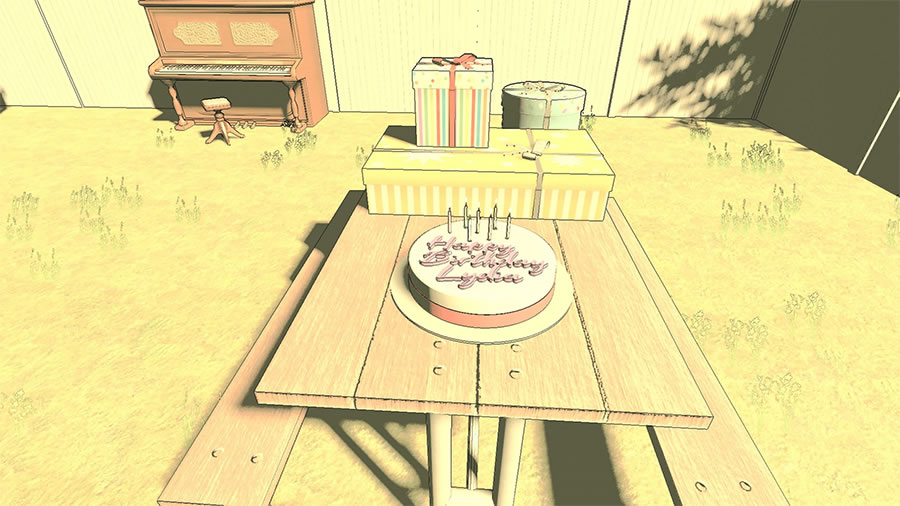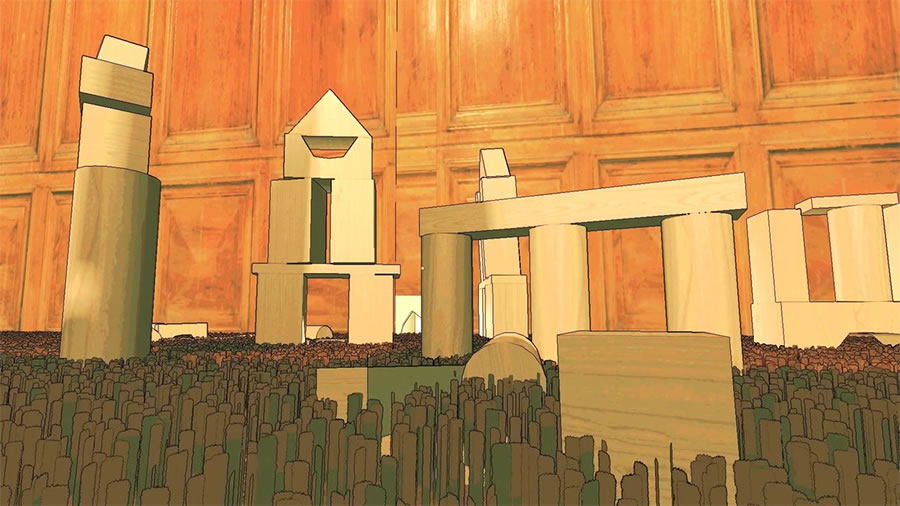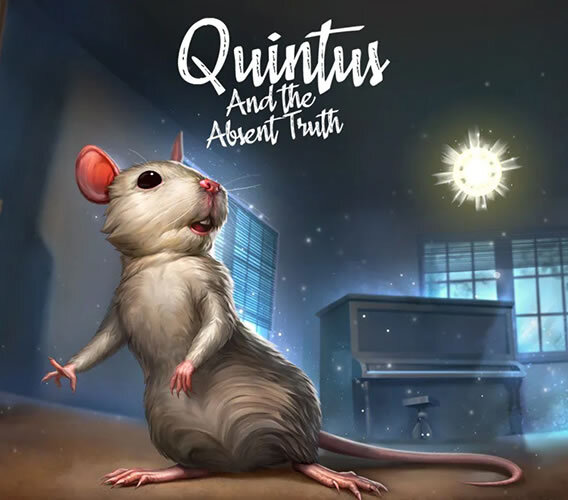- CLASSIC MAGAZINES
- REVIEW CREW
A show recapping what critics thought back
when classic games first came out! - NEXT GENERATION'S BEST & WORST
From the worst 1-star reviews to the best
5-stars can offer, this is Next Generation! - NINTENDO POWER (ARCHIVE)
Experience a variety of shows looking at the
often baffling history of Nintendo Power! - MAGAZINE RETROSPECTIVE
We're looking at the absolutely true history of
some of the most iconic game magazines ever! - SUPER PLAY'S TOP 600
The longest and most ambitious Super NES
countdown on the internet! - THEY SAID WHAT?
Debunking predictions and gossip found
in classic video game magazines! - NEXT GENERATION UNCOVERED
Cyril is back in this spin-off series, featuring the
cover critic review the art of Next Generation! - HARDCORE GAMER MAGAZING (PDF ISSUES)
Download all 36 issues of Hardcore Gamer
Magazine and relive the fun in PDF form!
- REVIEW CREW
- ELECTRONIC GAMING MONTHLY
- ELECTRONIC GAMING MONTHLY RANKS
From Mario to Sonic to Street Fighter, EGM
ranks classic game franchises and consoles! - ELECTRONIC GAMING MONTHLY BEST & WORST
Counting down EGM’s best and worst reviews
going year by year, from 1989 – 2009! - ELECTRONIC GAMING BEST & WORST AWARDS
11-part video series chronicling the ups and
downs of EGM’s Best & Worst Awards!
- ELECTRONIC GAMING MONTHLY RANKS
- GAME HISTORY
- GAME OVER: STORY BREAKDOWNS
Long-running series breaking down game
stories and analyzing their endings! - A BRIEF HISTORY OF GAMING w/ [NAME HERE]
Real history presented in a fun and pithy
format from a variety of game historians! - THE BLACK SHEEP
A series looking back at the black sheep
entries in popular game franchises! - INSTANT EXPERT
Everything you could possibly want to know
about a wide variety of gaming topics! - FREEZE FRAME
When something familiar happens in the games
industry, we're there to take a picture! - I'VE GOT YOUR NUMBER
Learn real video game history through a series
of number-themed episodes, starting at zero! - GREAT MOMENTS IN BAD ACTING
A joyous celebration of some of gaming's
absolute worst voice acting!
- GAME OVER: STORY BREAKDOWNS
- POPULAR SHOWS
- DG NEWS w/ LORNE RISELEY
Newsman Lorne Riseley hosts a regular
series looking at the hottest gaming news! - REVIEW REWIND
Cyril replays a game he reviewed 10+ years
ago to see if he got it right or wrong! - ON-RUNNING FEUDS
Defunct Games' longest-running show, with
editorials, observations and other fun oddities! - DEFUNCT GAMES QUIZ (ARCHIVE)
From online quizzes to game shows, we're
putting your video game knowledge to the test!- QUIZ: ONLINE PASS
Take a weekly quiz to see how well you know
the news and current gaming events! - QUIZ: KNOW THE GAME
One-on-one quiz show where contestants
find out if they actually know classic games! - QUIZ: THE LEADERBOARD
Can you guess the game based on the classic
review? Find out with The Leaderboard!
- QUIZ: ONLINE PASS
- DEFUNCT GAMES VS.
Cyril and the Defunct Games staff isn't afraid
to choose their favorite games and more! - CYRIL READS WORLDS OF POWER
Defunct Games recreates classic game
novelizations through the audio book format!
- DG NEWS w/ LORNE RISELEY
- COMEDY
- GAME EXPECTANCY
How long will your favorite hero live? We crunch
the numbers in this series about dying! - VIDEO GAME ADVICE
Famous game characters answer real personal
advice questions with a humorous slant! - FAKE GAMES: GUERILLA SCRAPBOOK
A long-running series about fake games and
the people who love them (covers included)! - WORST GAME EVER
A contest that attempts to create the worst
video game ever made, complete with covers! - LEVEL 1 STORIES
Literature based on the first stages of some
of your favorite classic video games! - THE COVER CRITIC
One of Defunct Games' earliest shows, Cover
Critic digs up some of the worst box art ever! - COMMERCIAL BREAK
Take a trip through some of the best and
worst video game advertisements of all time! - COMIC BOOK MODS
You've never seen comics like this before.
A curious mix of rewritten video game comics!
- GAME EXPECTANCY
- SERIES ARCHIVE
- NINTENDO SWITCH ONLINE ARCHIVE
A regularly-updated list of every Nintendo
Switch Online release, plus links to review! - PLAYSTATION PLUS CLASSIC ARCHIVE
A comprehensive list of every PlayStation
Plus classic release, including links! - RETRO-BIT PUBLISHING ARCHIVE
A regularly-updated list of every Retro-Bit
game released! - REVIEW MARATHONS w/ ADAM WALLACE
Join critic Adam Wallace as he takes us on a
classic review marathon with different themes!- DEFUNCT GAMES GOLF CLUB
Adam Wallace takes to the links to slice his way
through 72 classic golf game reviews! - 007 IN PIXELS
Adam Wallace takes on the world's greatest spy
as he reviews 15 weeks of James Bond games! - A SALUTE TO VAMPIRES
Adam Wallace is sinking his teeth into a series
covering Castlevania, BloodRayne and more! - CAPCOM'S CURSE
Adam Wallace is celebrating 13 days of Halloween
with a line-up of Capcom's scariest games! - THE FALL OF SUPERMAN
Adam Wallace is a man of steel for playing
some of the absolute worst Superman games! - THE 31 GAMES OF HALLOWEEN
Adam Wallace spends every day of October afraid
as he reviews some of the scariest games ever! - 12 WEEKS OF STAR TREK
Adam Wallace boldly goes where no critic has
gone before in this Star Trek marathon!
- DEFUNCT GAMES GOLF CLUB
- DAYS OF CHRISTMAS (ARCHIVE)
Annual holiday series with themed-episodes
that date all the way back to 2001!- 2015: 30 Ridiculous Retro Rumors
- 2014: 29 Magazines of Christmas
- 2013: 29 Questionable Power-Ups of Christmas
- 2012: 34 Theme Songs of Christmas
- 2011: 32 Game Endings of Christmas
- 2010: 31 Bonus Levels of Christmas
- 2009: 30 Genres of Christmas
- 2008: 29 Controls of Christmas
- 2007: 34 Cliches of Christmas
- 2006: 33 Consoles of Christmas
- 2005: 32 Articles of Christmas
- 2004: 31 Websites of Christmas
- 2003: 29 Issues of Christmas
- 2002: 28 Years of Christmas
- 2001: 33 Days of Christmas
- NINTENDO SWITCH ONLINE ARCHIVE
- REVIEW ARCHIVE
- FULL ARCHIVE
Quintus and the Absent Truth
When I downloaded the new game Quintus and the Absent Truth, I expected a cute and upbeat platformer starring a tiny mouse exploring an oversized world. I mean, the cover art and pictures make it look like the type of story you might read to a small child. Boy was I surprised to discover that the newest release from EastAsiaSoft is actually a dark and moody horror game, complete with ghosts and a violent conspiracy to uncover. Not that I’m complaining, because this is a much more compelling game than what I thought I was getting myself into. But is it scary enough to recommend? What’s what we’re going to find out when I review Quintus and the Absent Truth.
The first thing you need to know is that this is not a game about a small, absent-minded mouse named Quintus. Instead, it’s about Alan Shaw, a famous musician who has spent the better part of a decade in a funk after the untimely death of his wife, Christie. This has resulted in no new music or concerts, something that is not only frustrating his fans, but also his record label, Andromeda. But that’s the least of his worries when Alan’s daughter, Lydia, goes missing on her birthday. Now, it’s up to Alan to investigate his house and his former recording studio for clues before it’s too late.
It's worth mentioning that Alan is not alone on his journey, as a tiny mouse named Quintus will be tagging along for the ride. You’ll use him to reach out-of-the-way objects or slide into small holes that humans could never get into. Early on, he’s little more than a support character you drop off to get the job done, but there are a few times when we’ll take control of Quintus and go on a separate adventure to help Alan uncover the truth. These are some of the best and most inspired parts of the games, and it adds a fun new angle to both the horror and the mystery.
Through four short chapters, Alan and Quintus explore and investigate several important locations for clues about the missing daughter and what happened to Christie. Most of our job is to walk through empty corridors picking up important items that can be used to open up new parts of the level, such as a key or a note. There are also a few simple puzzles that you’ll need to solve, such as figuring out what keys to play on a piano or using a drum to solve a keycode riddle. To put it bluntly, these puzzles are easy to figure out, since the answers are almost always in the same room as the puzzle, but at least the game makes the effort.
The problem with Quintus and the Absent Truth is that lots of the elements are as half-assed as the puzzles. They keep sending us to new locations, yet not really giving us anything to do in them. Even the horror elements are little more than simple jump scares, like a broom falling over or a door slamming shut. Things feel like they are picking up when you see a ghost roaming the halls of Alan’s old record label, but, trust me, it’s not as interesting as it seems. This game keeps hinting at being really compelling, then reveals something that blunts the momentum entirely.
The simplistic art style definitely doesn’t help. No matter where you go, the world is presented using pencil outlines and flat textures. It’s supposed to look like the illustration in a kids’ book, and in that sense, I appreciate the artistic approach they took. The problem you’ll run into is that it makes every room and hallway look identical. There are times when it’s hard to figure out what you’re looking at, which makes getting around a lot harder than it should be. This faux-hand drawn style was done significantly better in a recent game called Nuts, mostly because that game decided to also use shading. I get what Quintus is going for, but it ends up being more of a liability than an actual benefit.
There are also a number of other frustrating gameplay issues that work to keep this horror game down. It’s weird things, too, such as having to hold the “X” button while using the right analog stick to rotate objects you pick up, something that is not comfortable with a modern controller. I also found that interacting with specific objects was inconsistent, where sometimes hitting the prompt did absolutely nothing. Even more frustrating is how you occasionally won’t even be able to pick up the items Quintus brings to you. The game has a real bad habit of breaking and forcing you to reload the checkpoint.
But even if these issues weren’t running rampant through the adventure, Quintus and the Absent Truth would be a disjointed horror game that never fully commits to its style or story. There are certainly compelling elements throughout this short story, but the ending is ultimately disappointing and not very satisfying. Let me put it this way: If you make a game about a world-class, critically-acclaimed musician, you absolutely need to make sure that your big, climactic song at the end doesn’t sound like a bunch of amateurs practicing something they’ve never played before. Instead of being moved or spooked, I spent the entire ending laughing at Alan’s terrible song. Trust me, it’s the most memorable thing in the game.
HOME |
CONTACT |
NOW HIRING |
WHAT IS DEFUNCT GAMES? |
NINTENDO SWITCH ONLINE |
RETRO-BIT PUBLISHING
Retro-Bit |
Switch Planet |
The Halcyon Show |
Same Name, Different Game |
Dragnix |
Press the Buttons
Game Zone Online | Hardcore Gamer | The Dreamcast Junkyard | Video Game Blogger
Dr Strife | Games For Lunch | Mondo Cool Cast | Boxed Pixels | Sega CD Universe | Gaming Trend
Game Zone Online | Hardcore Gamer | The Dreamcast Junkyard | Video Game Blogger
Dr Strife | Games For Lunch | Mondo Cool Cast | Boxed Pixels | Sega CD Universe | Gaming Trend
Copyright © 2001-2025 Defunct Games
All rights reserved. All trademarks are properties of their respective owners.
All rights reserved. All trademarks are properties of their respective owners.





































